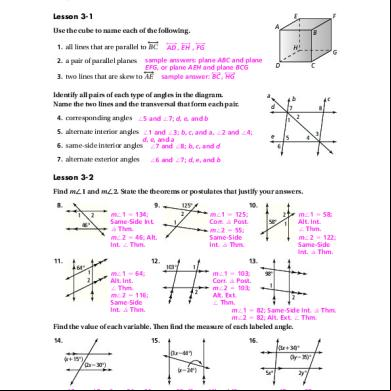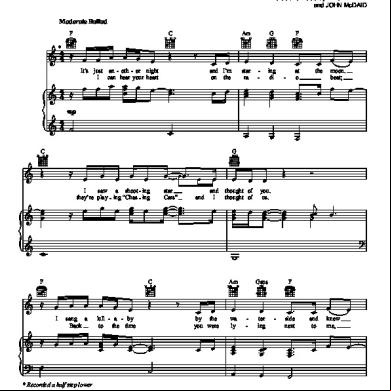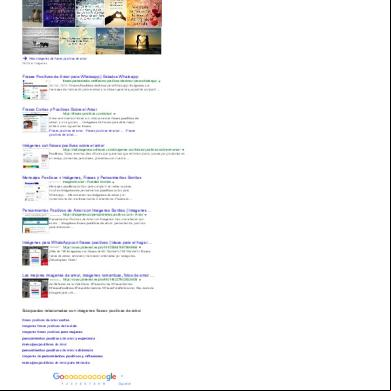Economics Chap 13 Review 545i5a
This document was ed by and they confirmed that they have the permission to share it. If you are author or own the copyright of this book, please report to us by using this report form. Report 3i3n4
Overview 26281t
& View Economics Chap 13 Review as PDF for free.
More details 6y5l6z
- Words: 993
- Pages: 5
9/24/2016
Monopolistic Competition and Oligopoly Flashcards | Quizlet
Monopolistic Competition and Oligopoly
50 by ATurbyfill96
In the short-run, a profit-maximizing monopolistically competitive firm sets its price:
above marginal cost.
Concentration ratios may be inaccurate indicators of the degree of monopoly power in an industry because:
foreign competition is not considered.
The more elastic a monopolistic competitor's long-run demand curve, the:
lower its average total cost at its profit maximizing level of output.
As a general rule, oligopoly exists when the four-firm concentration ratio:
is 40 percent or more.
Inefficiencies occur under monopolistic competition because:
each firm's downsloping demand curve is tangent to the ATC curve in the long run.
Nonprice competition refers to:
advertising, product promotion, and changes in the real or perceived characteristics of a product.
The mutual interdependence that characterizes oligopoly arises because:
a small number of firms produce a large proportion of industry output.
A significant benefit of monopolistic competition compared with pure competition is:
greater product variety.
Clear-cut mutual interdependence with respect to the price-output policies exists in:
oligopoly.
The kinked-demand curve of an oligopolist is based on the assumption that:
competitors will follow a price cut but ignore a price increase.
In the short-run, the price charged by a monopolistically competitive firm attempting to maximize profits:
may be either equal to ATC, less than ATC, or more than ATC.
For a monopolistically competitive firm in long-run equilibrium:
price will equal average total cost.
https://quizlet.com/78359375/monopolisticcompetitionandoligopolyflashcards/
1/5
9/24/2016
Monopolistic Competition and Oligopoly Flashcards | Quizlet
T/F: Homogenous oligopolists tend to more than do differentiated oligopolists.
false
The monopolistic competition model assumes that:
firms will engage in nonprice competition.
T/F: The excess capacity problem associated with monopolistic competition implies that fewer firms could produce the same industry output at a lower total cost.
true
The four-firm sales concentration ratio for an industry measures the:
extent to which the four largest firms dominate the production of a good.
Use your basic knowledge and your understanding of market structures to answer this question. Which of the following companies most closely approximates a monopolistic competitor?
Subway Sandwiches
T/F: The demand curve of a monopolistically competitive firm is more elastic than that of a pure monopolist.
True
The restaurant, legal assistance, and clothing industries are each illustrations of:
monopolistic competition.
The monopolistically competitive seller's demand curve will become more elastic the:
larger the number of competitors.
T/F: Mutual interdependence means that oligopolistic producers rely on price competition in determining their shares of the total market for their product.
false
If an oligopolist is faced with a marginal revenue curve that has a gap in it, we may assume that:
its demand curve is kinked.
T/F: Oligopolists use limit pricing to maximize short-run profits.
False
Oligopoly is difficult to analyze primarily because:
the price and output decisions of any one firm depend on the reactions of its rivals
The price elasticity of a monopolistically competitive firm's demand curve varies:
directly with the number of competitors, but inversely with the degree of product differentiation.
https://quizlet.com/78359375/monopolisticcompetitionandoligopolyflashcards/
2/5
9/24/2016
Monopolistic Competition and Oligopoly Flashcards | Quizlet
Aluminum competes with copper in the market for power transmission lines. This illustrates:
interindustry competition.
T/F: Generally speaking, the larger the number of firms in an oligopolistic industry, the more difficult it is for those firms to collude.
True
If competing oligopolists completely ignore oligopolist X's price changes, then X's:
demand curve will be more elastic than if the other oligopolists matched X's price changes.
Nonprice competition refers to:
product development, advertising, and product packaging.
In long-run equilibrium monopolistic competition entails:
an underallocation of resources.
If an oligopoly is faced with a kinkeddemand curve that is relatively elastic above, and relatively inelastic below, the going price, then it will:
decrease total revenue by either increasing or decreasing price.
T/F: Firms are more likely to collude when the economy is in a recession.
False
Which of the following industries is an illustration of homogeneous oligopoly?
aluminum
In which of these continuums of degrees of competition (highest to lowest) is oligopoly properly placed?
pure competition, monopolistic competition, oligopoly, pure monopoly
T/F: The larger the number of firms and the less the degree of product differentiation, the greater will be the elasticity of a monopolistically competitive seller's demand curve.
True
Monopolistic competition means:
many firms producing differentiated products.
Concentration ratios:
may understate the degree of competition because they ignore imported products.
https://quizlet.com/78359375/monopolisticcompetitionandoligopolyflashcards/
3/5
9/24/2016
Monopolistic Competition and Oligopoly Flashcards | Quizlet
Which of the following statements is correct?
In the long run purely competitive firms and monopolistically competitive firms earn zero economic profits, while pure monopolies may or may not earn economic profits.
Homogeneous oligopoly exists where a small number of firms are:
producing virtually identical products.
T/F: Monopolistically competitive sellers produce efficiently because they obtain only normal profits in the long run.
false
The economic inefficiencies of monopolistic competition may be offset by the fact that:
consumers have a number of variations of the product from which to choose.
T/F: The monopolistically competitive seller maximizes profits by equating price and marginal cost.
False
Which of the following is the best example of oligopoly?
automobile manufacturing
Prices are likely to be least flexible:
in oligopoly.
In the long run, new firms will enter a monopolistically competitive industry:
until economic profits are zero.
T/F: Two industries that have the same 4firm concentration ratio can have significantly different Herfindahl indexes.
True
In the long-run, economic theory predicts that a monopolistically competitive firm will:
have excess production capacity.
Use your basic knowledge and your understanding of market structures to answer this question. Which of the following companies most closely approximates a differentiated oligopolist in a highly concentrated industry?
Ford Motor Company
In monopolistically competitive markets resources are:
underallocated because long-run equilibrium occurs where price exceeds marginal cost.
Monopolistically competitive and purely competitive industries are similar in that:
there are few, if any, barriers to entry.
https://quizlet.com/78359375/monopolisticcompetitionandoligopolyflashcards/
4/5
9/24/2016
Monopolistic Competition and Oligopoly Flashcards | Quizlet
https://quizlet.com/78359375/monopolisticcompetitionandoligopolyflashcards/
5/5
Monopolistic Competition and Oligopoly Flashcards | Quizlet
Monopolistic Competition and Oligopoly
50 by ATurbyfill96
In the short-run, a profit-maximizing monopolistically competitive firm sets its price:
above marginal cost.
Concentration ratios may be inaccurate indicators of the degree of monopoly power in an industry because:
foreign competition is not considered.
The more elastic a monopolistic competitor's long-run demand curve, the:
lower its average total cost at its profit maximizing level of output.
As a general rule, oligopoly exists when the four-firm concentration ratio:
is 40 percent or more.
Inefficiencies occur under monopolistic competition because:
each firm's downsloping demand curve is tangent to the ATC curve in the long run.
Nonprice competition refers to:
advertising, product promotion, and changes in the real or perceived characteristics of a product.
The mutual interdependence that characterizes oligopoly arises because:
a small number of firms produce a large proportion of industry output.
A significant benefit of monopolistic competition compared with pure competition is:
greater product variety.
Clear-cut mutual interdependence with respect to the price-output policies exists in:
oligopoly.
The kinked-demand curve of an oligopolist is based on the assumption that:
competitors will follow a price cut but ignore a price increase.
In the short-run, the price charged by a monopolistically competitive firm attempting to maximize profits:
may be either equal to ATC, less than ATC, or more than ATC.
For a monopolistically competitive firm in long-run equilibrium:
price will equal average total cost.
https://quizlet.com/78359375/monopolisticcompetitionandoligopolyflashcards/
1/5
9/24/2016
Monopolistic Competition and Oligopoly Flashcards | Quizlet
T/F: Homogenous oligopolists tend to more than do differentiated oligopolists.
false
The monopolistic competition model assumes that:
firms will engage in nonprice competition.
T/F: The excess capacity problem associated with monopolistic competition implies that fewer firms could produce the same industry output at a lower total cost.
true
The four-firm sales concentration ratio for an industry measures the:
extent to which the four largest firms dominate the production of a good.
Use your basic knowledge and your understanding of market structures to answer this question. Which of the following companies most closely approximates a monopolistic competitor?
Subway Sandwiches
T/F: The demand curve of a monopolistically competitive firm is more elastic than that of a pure monopolist.
True
The restaurant, legal assistance, and clothing industries are each illustrations of:
monopolistic competition.
The monopolistically competitive seller's demand curve will become more elastic the:
larger the number of competitors.
T/F: Mutual interdependence means that oligopolistic producers rely on price competition in determining their shares of the total market for their product.
false
If an oligopolist is faced with a marginal revenue curve that has a gap in it, we may assume that:
its demand curve is kinked.
T/F: Oligopolists use limit pricing to maximize short-run profits.
False
Oligopoly is difficult to analyze primarily because:
the price and output decisions of any one firm depend on the reactions of its rivals
The price elasticity of a monopolistically competitive firm's demand curve varies:
directly with the number of competitors, but inversely with the degree of product differentiation.
https://quizlet.com/78359375/monopolisticcompetitionandoligopolyflashcards/
2/5
9/24/2016
Monopolistic Competition and Oligopoly Flashcards | Quizlet
Aluminum competes with copper in the market for power transmission lines. This illustrates:
interindustry competition.
T/F: Generally speaking, the larger the number of firms in an oligopolistic industry, the more difficult it is for those firms to collude.
True
If competing oligopolists completely ignore oligopolist X's price changes, then X's:
demand curve will be more elastic than if the other oligopolists matched X's price changes.
Nonprice competition refers to:
product development, advertising, and product packaging.
In long-run equilibrium monopolistic competition entails:
an underallocation of resources.
If an oligopoly is faced with a kinkeddemand curve that is relatively elastic above, and relatively inelastic below, the going price, then it will:
decrease total revenue by either increasing or decreasing price.
T/F: Firms are more likely to collude when the economy is in a recession.
False
Which of the following industries is an illustration of homogeneous oligopoly?
aluminum
In which of these continuums of degrees of competition (highest to lowest) is oligopoly properly placed?
pure competition, monopolistic competition, oligopoly, pure monopoly
T/F: The larger the number of firms and the less the degree of product differentiation, the greater will be the elasticity of a monopolistically competitive seller's demand curve.
True
Monopolistic competition means:
many firms producing differentiated products.
Concentration ratios:
may understate the degree of competition because they ignore imported products.
https://quizlet.com/78359375/monopolisticcompetitionandoligopolyflashcards/
3/5
9/24/2016
Monopolistic Competition and Oligopoly Flashcards | Quizlet
Which of the following statements is correct?
In the long run purely competitive firms and monopolistically competitive firms earn zero economic profits, while pure monopolies may or may not earn economic profits.
Homogeneous oligopoly exists where a small number of firms are:
producing virtually identical products.
T/F: Monopolistically competitive sellers produce efficiently because they obtain only normal profits in the long run.
false
The economic inefficiencies of monopolistic competition may be offset by the fact that:
consumers have a number of variations of the product from which to choose.
T/F: The monopolistically competitive seller maximizes profits by equating price and marginal cost.
False
Which of the following is the best example of oligopoly?
automobile manufacturing
Prices are likely to be least flexible:
in oligopoly.
In the long run, new firms will enter a monopolistically competitive industry:
until economic profits are zero.
T/F: Two industries that have the same 4firm concentration ratio can have significantly different Herfindahl indexes.
True
In the long-run, economic theory predicts that a monopolistically competitive firm will:
have excess production capacity.
Use your basic knowledge and your understanding of market structures to answer this question. Which of the following companies most closely approximates a differentiated oligopolist in a highly concentrated industry?
Ford Motor Company
In monopolistically competitive markets resources are:
underallocated because long-run equilibrium occurs where price exceeds marginal cost.
Monopolistically competitive and purely competitive industries are similar in that:
there are few, if any, barriers to entry.
https://quizlet.com/78359375/monopolisticcompetitionandoligopolyflashcards/
4/5
9/24/2016
Monopolistic Competition and Oligopoly Flashcards | Quizlet
https://quizlet.com/78359375/monopolisticcompetitionandoligopolyflashcards/
5/5










